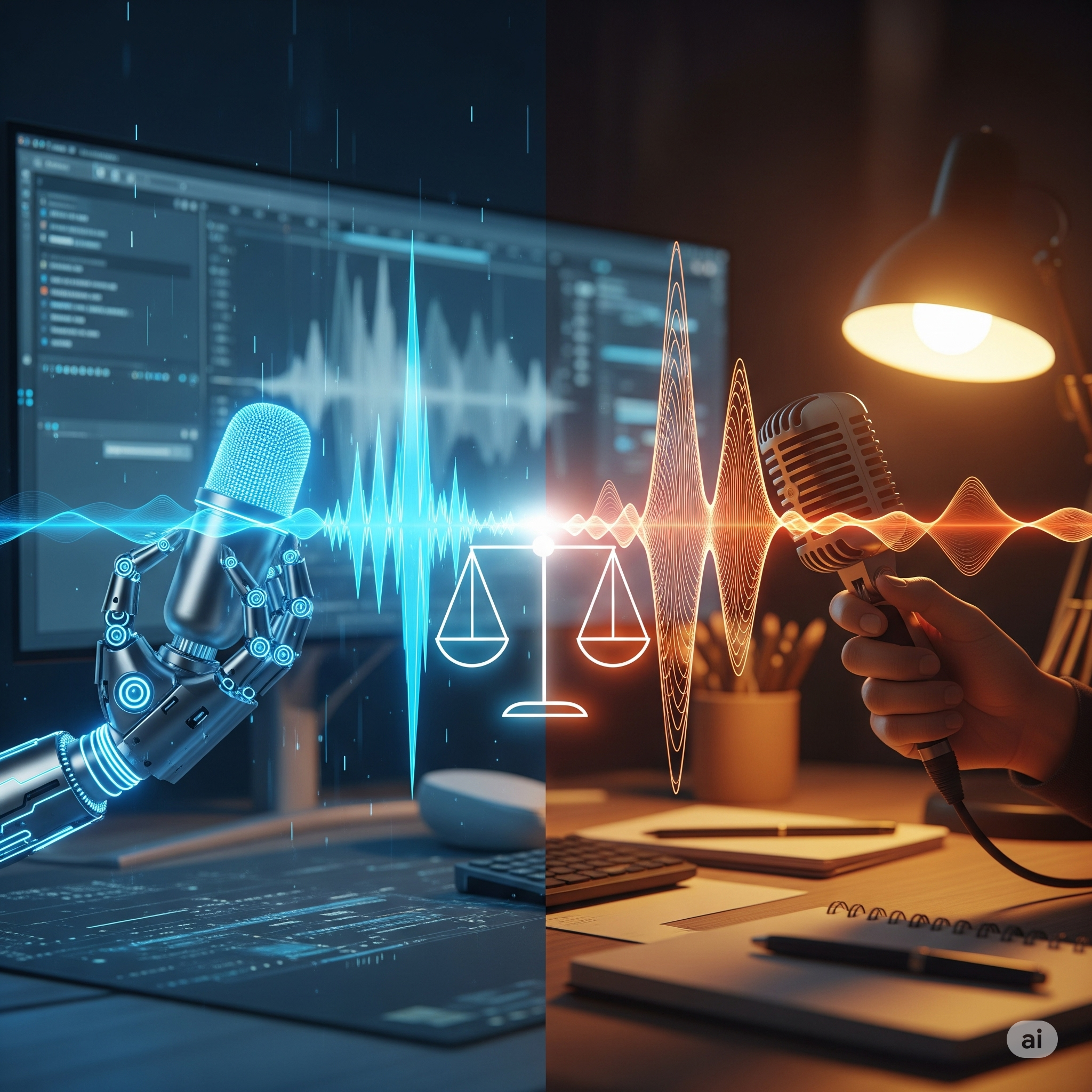AI Voiceover Tools vs. Human Voice: What’s Better for Content Creators in 2025?
🎙️ AI Voiceover Tools vs. Human Voice: What’s Better for Content Creators in 2025?
In the fast-evolving world of content creation, creators in 2025 face a critical question: Should you use AI voiceover tools or stick to the human voice? With the rise of artificial intelligence, voiceovers powered by AI have become highly realistic and scalable. However, the human voice still holds emotional weight and authenticity that machines struggle to replicate.
So, let’s break it down and help you decide which is better for your content journey.
🤖 What Are AI Voiceover Tools?
AI voiceover tools use machine learning and natural language processing to convert text into realistic human-like speech. They mimic tones, emotions, and languages with impressive accuracy.
🔧 Top AI Voiceover Tools in 2025:
-
Murf.ai
-
Play.ht
-
ElevenLabs
-
LOVO.ai
-
Synthesys
👉 Check our detailed guide on tools at: Top 5 AI Tools Helping Small Businesses Grow

🎯 Pros of AI Voiceover Tools
✅ 1. Cost-Effective
No need to hire voice actors or studio time. A subscription can be as low as ₹500/month.
✅ 2. Fast Turnaround
Generate hundreds of voiceovers in minutes. Perfect for scaling YouTube shorts, reels, or explainer videos.
✅ 3. Multi-Language & Accent Support
AI can deliver your content in over 30+ languages and regional accents—a boon for global creators.
✅ 4. Consistency
Maintain the same tone, pronunciation, and pacing across all videos.
⚠️ Cons of AI Voiceovers
❌ 1. Lack of Deep Emotion
AI can simulate emotion but often lacks genuine passion or depth found in human voices.
❌ 2. Robotic Feel
Some listeners can still detect the “unnatural” cadence or “flatness” in long-form content.
❌ 3. Limited Flexibility
Sarcasm, wit, or spontaneous tone-shifts are hard for AI to mimic accurately.
🧑🎤 Why Human Voice Still Matters
Despite advances in AI, human voice artists remain irreplaceable for storytelling, audiobooks, brand-building, and emotional content.
✅ 1. Emotional Engagement
Listeners form a personal connection through real voices.
✅ 2. Better Brand Trust
For podcasts, coaching videos, and ads, human voices increase relatability and credibility.
✅ 3. Creative Freedom
Humans bring in unique energy, pauses, emphasis, and personality that AI can’t replicate.
🆚 AI vs. Human: Where Should You Use Each?
| Use Case | Best Option |
|---|---|
| YouTube Shorts/Reels | AI Voiceover |
| Explainer or Demo Videos | AI Voiceover |
| Emotional Storytelling/Podcast | Human Voice |
| Audiobooks | Human Voice |
| Marketing Ads | Depends on Budget |
| Educational Content (eLearning) | AI + Human Combo |
💡 Pro Tip: Hybrid is the Future
Many top creators now use a hybrid model:
-
Use AI for basic, repetitive content
-
Use human voice for main narratives, stories, and branding
This approach saves time and money while keeping content authentic.
📈 Which One Helps Grow Faster?
-
If your priority is speed + scale + low budget → Go with AI voiceover tools.
-
If you want long-term audience loyalty & engagement → Invest in human voiceovers.
🛠️ Recommended Tools for Creators
| Purpose | Tool | Link |
|---|---|---|
| AI Voiceovers | Murf.ai | murf.ai |
| Script Writing | Copy.ai, Jasper | copy.ai |
| Human Voices | Fiverr/Voquent Talent | fiverr.com |
🔚 Conclusion
In 2025, both AI voiceovers and human voice have their place in the content ecosystem. AI brings speed, affordability, and multi-lingual reach, while humans bring trust, connection, and creativity. The smartest creators leverage both based on content type and audience needs.
👉 Related Blog:
Best Freelancing Skills in 2025 to Earn from Home
